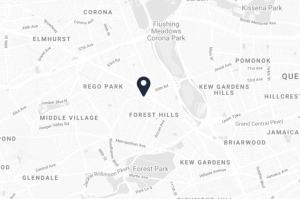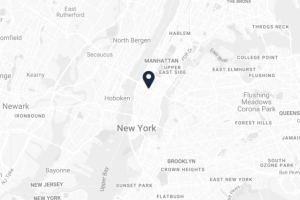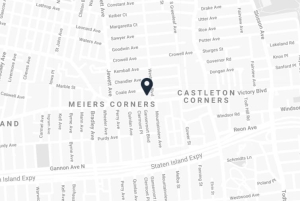Hurt by a Drunk Driver on July Fourth: Queens Car Accident Lawyers
HURT BY A DRUNK DRIVER ON JULY FOURTH: QUEENS CAR ACCIDENT LAWYERS
| Jul 2, 2020 | Car Accidents, Motor Vehicle Accidents, Personal Injury |
QUEENS CAR ACCIDENT LAWYERS EXPLAIN WHAT HAPPENS IF YOU ARE HURT BY A DRUNK DRIVER ON JULY FOURTH
Independence Day is a federal holiday in the United States which marks the Declaration of Independence of the United States on July 4, 1776. Also known as July Fourth or the Fourth of July, this is the pinnacle of American holidays. Many Americans spend this day watching fireworks, enjoying barbecues, and having parties with family and friends. This year especially in New York as the restrictions from the coronavirus known as COVID-19 ease, many more New Yorkers will venture out to celebrate with family and friends to reacquaint after a prolonged quarantine. This means many more people will be out, perhaps not like past years, but they will still be out and likely partaking in alcoholic drinks. Of course, this gives rise to the issue of an innocent victim being hurt by a drunk driver on July Fourth.
Our Queens car accident lawyers at Cohen and Cohen Law Group, P.C., know what this means for a family. Extreme physical pain, emotional distress, and overburdening financial damages are common in a drunk driving accident in New York when a defendant makes a reckless, careless, and negligent choice to drive intoxicated. With so many options for taxis and ride sharing in the five boroughs and Long Island, a drunk driver is outrageously negligence and completely avoidable. If you or a loved one are seriously hurt by a drunk driver on July Fourth, call our New York City personal injury lawyers for a FREE consultation to learn how we can help protect your rights to compensation.
STATISTICS ON DRUNK DRIVING
Despite being a completely preventable and avoidable type of accident, the National Highway Traffic Safety Administration (NHTSA) still reports that approximately 30 people are killed each day due to a drunk driver. When it comes to Independence day, the United States Department of Transportation released a yearly Traffic Safety Marketing Report which shocking reveals that, in the last year of statistics, 193 people died in motor vehicle accidents on July Fourth. What is even worse, 71% of all those who died in an alcohol-impaired crash involved at least one driver with a BAC of .15 or higher, which is almost twice the legal limit in New York. That means people are not only making reckless choices, but they are making grossly negligent decisions to drive drunk.
CAUSES OF DRUNK DRIVING IN NEW YORK
The causes of drunk driving in New York are simple. Negligence. No motorist who has had any alcohol should operate a motor vehicle. There are too many options for taxis and ride sharing in our area. But far too many motorists believe that they are close enough and can make it home safely. Other motorists think that it is safe to drive home because they “did not have that many.” Some even think that eating bread and drinking coffee will make them sober again to drive. Other motorists simply do not care and think that they will be able to get away with it because they have not seen police in their area.
These are all poor excuses. Not only does it not matter whether a person driving drunk will be caught or not, but it is just reckless and dangerous for at least one person—the drunk driver! Many statistics above reveal that some drunk driving accidents are just single car accidents. But far too often a drunk driving accident involves multiple vehicles. When that happens, the frustrating truth is that innocent people are usually the ones who are seriously injured or wrongfully killed.
DRUNK DRIVING IS ILLEGAL UNDER NEW YORK VEHICLE AND TRAFFIC LAW
It is well-known that driving while intoxicated is illegal in every state, including New York. Under New York law, a driver is automatically deemed intoxicated and impaired if he or she has a BAC over .08. That is the legal limit prescribed by New York Vehicle and Traffic Law section 1192. A motorist who is driving .08 or higher is automatically deemed to be intoxicated.
But a motorist may still have a BAC below .08 and be declared driving while ability impaired. This is because New York law affords a police officer discretion in handling a drunk driving stop. A motorist who has a BAC lower than .08 but who is acting with decreased reaction, inability, or is appearing to be intoxicated would be arrested and charged with a DWAI, or driving while ability impaired. This can be as low as .02, which could be merely one beer over an hour for some individuals. That is a very low threshold, but it is also a very important one to keep us all safe—including motorists.
DRUNK DRIVING IS UNLAWFUL FOR COMMERCIAL VEHICLES UNDER NEW YORK LAW AND FEDERAL REGULATIONS
While all states have a drunk driving statute, the laws can differ state-to-state. Since commercial trucking is an interstate business, there is a federal agency which sets the minimum standards required in all states. These minimum standards are what all commercial drivers such as truck drivers, bus drivers, tankers, and other CDL drivers must comply with. These are also the strictest alcohol regulations in the entire country, if not the world.
The Federal Motor Carrier Safety Administration (FMCSA) providers under 49 CFR section 392.5 that no truck driver may use alcohol during a shift, not truck driver may have a BAC higher than 0.0, and and no truck driver may consume any alcohol within four hours of a shift beginning. That is a huge restriction that no alcohol may be consumed even four hours before a truck driver starts to work. This means that whenever a truck driver has any BAC, it can result in a violation and be unlawful. Any innocent person or family hurt by a drunk driver should ask our New York City personal injury lawyers at Cohen and Cohen Law Group, P.C. for help with any Queens car accident.
LIABILITY FOR A DRUNK DRIVING ACCIDENT IN NEW YORK
To understand liability in a drunk driving accident, on most understand liability in general. A Queens car accident is usually premised on negligence which is a common law cause of action. That means that it is a body of law which has been developed by judges in decisional law and has evolved over the decades and centuries. It is driven by public sentiment and focuses on the reasonableness of a person’s actions or inactions.
Negligence thus boils down to the unnecessary risks of harm that a person exposed to another person or entity which was unjustified and unreasonable. In order to set forth a basic claim for negligence, a victim hurt by a drunk driver on July Fourth would need to prove the following:
- A duty of care was owed
- There was a breach of duty
- The breach of the duty caused
- Damages to a victim.
These four elements are required in order to establish liability under a cause of action of negligence.
WHAT IS A DUTY WHILE OPERATING A MOTOR VEHICLE?
All motorist owe others a duty of care when operating a motor vehicle. This duty requires all motorists to exercise reasonable care in the use or operation of their motor vehicle to prevent causing foreseeable harm to others on or near the roadway. This duty is a reasonableness standard which means that it is flexible and can evolve to the situation.
Motorists also owe a duty to see what there is to be seen and hear what there is to be heard in the use or operation of a motor vehicle. This means that motorists cannot say that they did not see another vehicle, and that motorists most use their reasonable senses to hear and see what is around them.
As a drunk driver, a motorist will have limitations to his or her senses. A motorist may also have delayed reactions in sensing and altering a course of conduct in driving. Motorists may also be unable to safely react or react at all. Some drunk drivers may be so intoxicated that they may not react at all or even see, hear, or sense the danger. These are all dangerous and neglectful conduct of one’s duty.
WHAT IS A BREACH OF A DUTY?
A breach of a duty is when a motorist fails to act reasonably while operating a motor vehicle. This means not fulfilling their duty. Driving while drunk is almost always a breach of that duty, whether or not a person causes an accident. In fact, even a drunk driver who thinks they got away with it technically violated New York law and their obligations under the negligence doctrine.
CAUSATION: NEW YORK CITY PERSONAL INJURY LAWYER EXPLAINS DRUNK DRIVING CAUSATION
The most hotly contested issue in any motor vehicle accident is almost always causation. This is the element that a defendant driving drunk was the proximate cause of a crash. The term “proximate cause” has been the standard for decades and has shifted now to being a “substantial factor” in causing the accident. This means that a defendant’s actions in breaching their duty of care was a substantial factor in causing the motor vehicle accident, that defendant is likely to be liable.
A more rudimentary way of thinking of it, but a common way that a Court may look at it, is “but for the defendant driving drunk, would the accident have happened?” If the defendant’s intoxication caused the accident, it is likely that the defendant will be found to have been a substantial factor in the drunk driving accident.
Causation sometimes requires an expert or a police accident reconstruction. This is because some motor vehicle accidents have many causes, even when there is a drunk driver. This is also because the actions of a drunk driver must have been the cause.
For example, New York courts have found that a drunk driver stopped at a red light who runs a red light is negligent. But a drunk driver who is going through a green light and another motorist runs a red light and hits the drunk driver, that the drunk driver’s intoxication was not the cause of the motor vehicle accident. That means that a drunk driver was not negligent in causing the accident, although the drunk driver was still breaking the law.
Defense lawyers and insurance adjusters know this and will do everything in their power to shift blame to an innocent victim in a Queens car accident case. This is why it is imperative for a victim and their family to hire a New York City personal injury lawyer like Cohen and Cohen Law Group, P.C.
DAMAGES FROM A DRUNK DRIVER CAR ACCIDENT
Victims can suffer a wide range of damages. Under New York law, damages are the relief that a victim may recover in a lawsuit. These damages are typically for compensation such as pain and suffering, lost wages, lost future earnings, medical bills, future surgeries, loss of consortium, property damages, punitive damages, and other relief. Damages are mostly for personal injuries, which is usually the largest component of a Queens car accident lawsuit.
Some of the most common damages that a victim hurt by a drunk driver on July Fourth may sustain include the following:
- Traumatic brain injuries or TBIs
- Spinal cord injuries or SCIs
- Amputations
- Head injuries
- Neck and back injuries including disc herniations, slipped discs, annular tears, compression fractures, and similar injuries
- Broken bones or fractured bones
- Need for surgery
- Organ injuries
- Blindness
- Significant disfigurement
- Orbital blowout fractures to the face
- Nerve injuries to the face or brachial plexus, and
- Other serious injuries including wrongful death that our New York City personal injury lawyers may be able to help with.
PROVING LIABILITY FOR A DRUNK DRIVING ACCIDENT: TWO MAIN WAYS
In order to state a successful cause of action for negligence, a victim will need to establish liability. Generally, there are two ways to do this.
The first is to use the four elements above to establish that a drunk driver was negligent by breaking his or her duty of care and causing you damages. This is established by proving each element, one at a time. It helps when there is an investigation or that a defendant pleads guilty or is found guilty of drunk driving. If an insurance company fights negligence, it is usually on causation or damages. A jury could hear the case and decide whether the drunk driver is liable to you.
The second way is through the doctrine of negligence per se when the violation of a statute causes injuries. This allows a victim to use a statutory violation to automatically prove liability and a breach of duty. This means that a victim will only have to establish causation and damages. This is helpful because it can make a trial go from a full trial to just a trial on damages, which is cheaper and faster, as well as easier for a jury to decide.
In order to establish negligence per se, a victim must establish the following:
- the defendant violated a statute (drunk driving law)
- the victim was a person who was supposed to be protected by the statute, and
- the victim’s injured were the type of harm that was supposed to be prevented by the statute.
In a Queens car accident where a victim is hurt by a drunk driver on July Fourth, it is likely that all of these elements will be met and a victim can automatically establish liability.
It is important to note that, where the defendant is a truck driver violating the FMCSA regulations, that is not a statute or New York law. This means that a truck driver causing an accident due to a FMCSA regulation may still be liable under the negligence per se doctrine. However, the violation of a regulation is only evidence of negligence. This means that it is not automatic liability, but a piece of evidence that can go towards establishing liability. That is a huge component in a personal injury lawsuit.
IF YOU OR A LOVED ONE WERE HURT BY A DRUNK DRIVER ON JULY FOURTH, WE CAN HELP
Our experienced New York City personal injury lawyers can help protect your rights in a Queens car accident when a drunk driver caused you serious personal injuries or the wrongful death of a loved one. We handle cases throughout Queens, Bronx, Manhattan, Brooklyn, Staten Island, Long Island, or anywhere else in New York. Call COHEN & COHEN PERSONAL INJURY LAWYERS, P.C. by dialing (718) 275-7779 for a FREE case evaluation or use our convenient and easy-to-use contact us box available here to get started.




